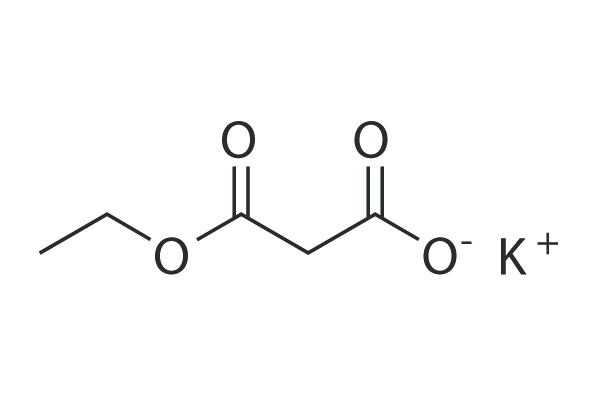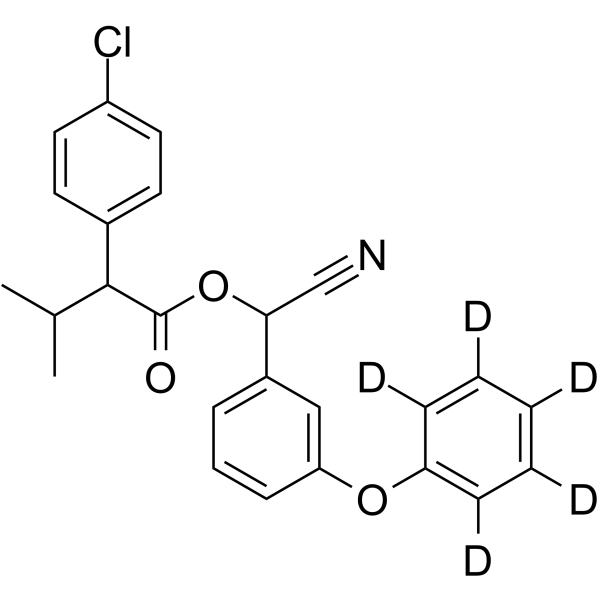Enzymes(酶)
Enzymes are very efficient and specific catalyst proteins which react with 1 or few types of substrates in biochemical reactions and are responsible for bringing about almost all of the chemical reactions in living organisms. Enzymes speed up reactions by providing an alternative reaction pathway of lower activation energy. Without enzymes, reactions take place at a rate far too slow for the pace of metabolism which means that they speed up the chemical reactions in living things.
There are 2 types of enzymes, ones that help join specific molecules together to form new molecules & others that help break specific molecules apart into separate molecules. Enzymes play many important roles ouside the cell as well. One of the best examples of this is the digestive system. For instance, it is enzymes in your digestive system that break food down in your digestive system break food down into small molecules that can be absorbed by the body. Some enzymes in your digestive system break down starch, some proteins and others break down fats. The enzymes used to digest our food are extra-cellular since they are located outside our cells & enzymes inside our cells are intra-cellular enzymes. Enzymes are used in ALL chemical reactions in living things; this includes respiration, photosynthesis, movement growth, getting rid of toxic chemicals in the liver and so on. Enzymes are proteins that must have the correct structure to be active. They are very easily affected by heat, pH and heavy metal ions.
Ribonucleoprotein enzyme catalytic activity is located in the protein part but for some the catalytic activity is in the RNA part. A catalyst is any substance which makes a chemical reaction go faster, without itself being changed. A catalyst can be used over and over again in a chemical reaction and does not get used up.
Enzymes lower the amount of activation energy needed by binding to the reactants of the reaction they catalyze, thus speed up the reaction and can process millions of molecules per second. Enzymes are typically large proteins with high molecular weight that permit reactions to go at conditions that the body can tolerate.
Enzyme nomenclature is based on what the enzyme reacts with & how it reacts along with the ending ase.
Enzymes must get over the activation energy hurdle.
Enzymes change how a reaction will proceed which reduces the activation energy and makes it faster. The more we increase the enzyme concentration the faster the reaction rate for non-catalyzed reactions. Enzymes that are catalyzed reactions also increase reaction rate at higher level of concentration but up to a certain point called Vmax which means that the enzyme has reached its maximum point. The reaction is limited by both the concentrations of the enzyme and substrate. Enzymes as catalysts take part in reactions which provide an alternative reaction pathway. Enzymes do not undergo permanent changes and remain unchanged at the end of the reaction. They only change the rate of reaction, not the position of the equilibrium.Enzymes as catalysts are highly selective by only catalysing specific reactions due to the shapes of the enzyme’s molecule.
Enzymes contain a globular protein part called apoenzyme and a non-protein part named cofactor or prosthetic group or metal-ion-activator. Changes in temperature and pH have great influence on the intra- and intermolecular bonds that hold the protein part in their secondary and tertiary structures.
Examples of cofactors are 1. Prosthetic group that are permanently bound to the enzyme. 2. Activator group which are cations (positively charged metal ions) & temporarily bind to the active site of the enzyme. 3.Coenzymes, usually vitamins or made from vitamins which are not permanently bound to the enzyme molecule, but combine with the enzyme-substrate complex temporarily. Enzymes require the presence cofactors before their catalytic activity can be exerted. This entire active complex is referred to as the holoenzyme.
Without enzymes, our guts would take weeks to digest our food, our muscles, nerves and bones would not work properly and so on…
Main Enzyme category groups:
Oxidoreductases:
All enzymes that catalyse oxido-reductions belong in this class. The substrate oxidized is regarded as a hydrogen or electron donor. The classification is based on 'donor:acceptor oxidoreductase'. The common name is 'dehydrogenase', wherever this is possible; as an alternative, 'acceptor reductase' can be used. 'Oxidase' is used only where O2 is an acceptor. Classification is difficult in some cases, because of the lack of specificity towards the acceptor.
Transferases:
Transferases are enzymes that transfer a group, for example, the methyl group or a glycosyl group, from one compound (generally regarded as donor) to another compound (generally regarded as acceptor). The classification is based on the scheme 'donor:acceptor grouptransferase'. The common names are normally formed as 'acceptor grouptransferase' or 'donor grouptransferase'. In many cases, the donor is a cofactor (coenzyme) that carries the group to be transferred. The aminotransferases constitute a special case.
Hydrolases:
These enzymes catalyse the hydrolysis of various bonds. Some of these enzymes pose problems because they have a very wide specificity, and it is not easy to decide if two preparations described by different authors are the same, or if they should be listed under different entries. While the systematic name always includes 'hydrolase', the common name is, in most cases, formed by the name of the substrate with the suffix -ase. It is understood that the name of the substrate with this suffix, and no other indicator, means a hydrolytic enzyme. It should be noted that peptidases have recommended names rather than common names.
Lyases:
Lyases are enzymes that cleave C-C, C-O, C-N and other bonds by means other than by hydrolysis or oxidation. They differ from other enzymes in that two (or more) substrates are involved in one reaction direction, but there is one compound fewer in the other direction. When acting on the single substrate, a molecule is eliminated and this generates either a new double bond or a new ring. The systematic name is formed according to 'substrate group-lyase'. In common names, expressions like decarboxylase, aldolase, etc. are used. 'Dehydratase' is used for those enzymes that eliminate water. In cases where the reverse reaction is the more important, or the only one to be demonstrated, 'synthase' may be used in the name.
Ligases:
Ligases are enzymes that catalyse the joining of two molecules with concomitant hydrolysis of the diphosphate bond in ATP or a similar triphosphate. 'Ligase' is often used for the common name, but, in a few cases, 'synthase' or 'carboxylase' is used. 'Synthetase' may be used in place of 'synthase' for enzymes in this class.
Products for Enzymes
- 41701(11)
- Activating Transcription Factor(3)
- Adenylate Kinase(10)
- AHCY(3)
- Aldolase(9)
- Asparaginase(5)
- Aurora Kinase(18)
- Beta Lactamase(3)
- Calcium and Integrin Binding(2)
- Calcium/Calmodulin-Dependent Protein Kinase(4)
- Carbonic Anhydrase(49)
- Casein Kinase(36)
- Cathepsin(52)
- Chitinase(5)
- Creatin Kinases(9)
- Cyclin(7)
- Cyclin-Dependent Kinase(18)
- Cyclophilin(23)
- Deaminase(14)
- Decarboxylase(12)
- Dehydrogenase(96)
- Discoidin Domain Receptor Tyrosine Kinase(2)
- DNA Polymerase(4)
- EGF Receptor(3)
- Endonuclease(6)
- Enolase(10)
- Enterokinase(5)
- Epimerase(3)
- Esterase(15)
- FGF Receptors(12)
- FK506 Binding Protein(10)
- Fructosamine 3 Kinase(2)
- Galactosidase(5)
- Glucosidase(32)
- Gluteradoxin(7)
- Glycogen synthase kinase(2)
- Glycosylase(10)
- Glyoxalase(3)
- Granzyme(7)
- Guanylate Kinase(2)
- Heparanase(2)
- Histone Deacetylase(3)
- Hydratase(10)
- Hydrolase(33)
- Hydroxylase(6)
- Isomerase(26)
- Jun N-terminal Kinase(1)
- Jun Proto-Oncogene(2)
- Kallikrein(26)
- Ligase(4)
- Lipase(14)
- Lipocalin(6)
- Lyase(9)
- LYVE1(3)
- Mitogen-Activated Protein Kinase(16)
- MMP(68)
- Mutase(11)
- Natural Enzymes(4)
- Nuclease(18)
- Nucleotidase(4)
- Nudix Type Motif(11)
- Other Enzymes(63)
- Oxidase(23)
- Oxygenase(12)
- Paraoxonase(3)
- Peptidase(41)
- Peroxiredoxin(10)
- Phosphatase(150)
- Phosphorylase(9)
- PI3-kinase(5)
- Polymerase(13)
- PPARG(2)
- Protease(15)
- Proteasome(54)
- Protein Kinase Akt1/PKB alpha(4)
- Protein Kinase-A(7)
- Protein Kinase-C(3)
- Protein Kinases(86)
- Protein Tyrosine Phosphatase(10)
- Reductase(60)
- Secreted Phospholipase A2(10)
- Serine Threonine Kinase(4)
- Sulfatase(8)
- Synthase(23)
- Synthetase(33)
- TGFBR(3)
- TGM2(3)
- TIMP(10)
- TPA(4)
- Transferase(156)
- Tyrosine Kinase(9)
- Ubiquitin Conjugating Enzyme(39)
- Uromodulin(4)
- VEGF Receptors(14)
- Transaminase(19)
- Hexokinase(6)
- TIE1(6)
- Cat.No. 产品名称 Information
-
GP26148
Enterokinase Human
Enterokinase Human produced in E

-
GP21607
Enterokinase Porcine
Enteropeptidase/ Enterokinase Porcine

-
GP21608
ENTPD3 Human
Ectonucleoside Triphosphate Diphosphohydrolase 3 Human Recombinant

-
GP21609
ENTPD3 Human, sf9
Ectonucleoside Triphosphate Diphosphohydrolase 3 Human Recombinant, sf9

-
GP21610
ENTPD3 Human, sf9 Bioactive
Ectonucleoside Triphosphate Diphosphohydrolase 3 Human Recombinant, sf9 Bioactive

-
GP21611
EOGT Mouse
EGF Domain-Specific O-Linked N-Acetylglucosamine Transferase Mouse Recombinant

-
GP21612
EPHX1 Human
环氧化物水解酶 1 微粒体人重组体

-
GP21613
EPHX1 Human, Sf9
Epoxide Hydrolase 1 Microsomal Human Recombinant, sf9

-
GC43618
Epiblastin A
An inhibitor of CK1α, CK1δ, and CK1ε

-
GP22488
ErbB2 Human
ErbB-2 Human Recombinant

-
GP22489
ErbB2 Human, Sf9
Tyrosine Kinase ErbB-2 Human Recombinant, Sf9

-
GP22491
ErbB3 Human
Tyrosine Kinase ErbB-3 Human Recombinant

-
GP22492
ErbB3 Human, sf9
Tyrosine Kinase ErbB-3 Human Recombinant, sf9

-
GP22493
ErbB3 Mouse
Tyrosine Kinase ErbB-3 Mouse Recombinant

-
GP26187
ErbB4 Human
ErbB4 Human Recombinant produced in HEK293 Cells is a single, glycosylated polypeptide chain containing 863 amino acids (26-649 a

-
GP21614
Esterase D Human
酯酶 D,S-甲酰谷胱甘肽水解酶 人重组

-
GC25389
Ethyl potassium malonate
Potassium 3-ethoxy-3-oxopropanoate, Malonic Acid Monoethyl Ester Potassium Salt
Ethyl potassium malonate (Potassium 3-ethoxy-3-oxopropanoate) is used as a competitive inhibitor of the enzyme succinate dehydrogenase. It acts as a precursor to produce (trimethylsilyl)ethyl malonate, which is utilized to prepare beta-ketoesters by acylation and serves as an intermediate for the preparation of ethyl tert-butyl malonate.
-
GP22494
ETNK2 Human
EthanolamineKinase 2 Human Recombinant

-
GC69090
EWP 815
EWP 815 是一种二硫类似物,是 Ins(1,4)P2 磷酸酶和 Ins(1,4,5)P3 5-磷酸酶的有效抑制剂。EWP 815 也参与抑制体内多巴胺酶 β-羟化酶活性。

-
GP21615
FAAH2 Human
Fatty Acid Amide Hydrolase 2 Human Recombinant

-
GP21616
FAHD1 Human
Fumarylacetoacetate Hydrolase Domain Containing 1 Human Recombinant

-
GC59040
FAM alkyne, 5-isomer
FAM 炔烃,5-异构体是一种高选择性和灵敏的碱性磷酸酶 (ALP) 荧光生物传感器。

-
GP26149
FAP Human
FAP Human produced in Sf9 Baculovirus cells is a single, glycosylated polypeptide chain containing 744 amino acids (26-760aa) and having a molecular mass of 86

-
GP21617
FARS2 Human
Phenylalanyl-tRNA Synthetase 2 Human Recombinant

-
GP21618
FARSB Human
Phenylalanyl-TRNA Synthetase Beta Human Recombinant

-
GP21619
FBL Human
Fibrillarin Human Recombinant

-
GP21620
FBP1 Human
Fructose-1,6-Bisphosphatase 1 Human Recombinant

-
GP26150
FBP1 Human, Active
FBP1 Recombinant produced in E

-
GP21621
FBP2 Human
Fructose-1,6-Bisphosphatase 2 Human Recombinant

-
GP21622
FDFT1 Human
Farnesyl-Diphosphate Farnesyltransferase 1 Human Recombinant

-
GP21623
FEN1 Human
Flap Structure-Specific Endonuclease 1 Human Recombinant

-
GC46147
Fenvalerate
氰戊菊酯
A pyrethroid ester insecticide and acaricide
-
GC63327
Fenvalerate-d5
氰戊菊酯-D5
Fenvalerate-d5 是 Fenvalerate 的氘代物。Fenvalerate 是一种有效的蛋白磷酸酶 2B (钙调神经磷酸酶;calcineurin) 抑制剂,对 PP2B-Aα 的IC50 为 2-4 nM。Fenvalerate 是拟除虫菊酯杀虫剂和杀螨剂。
-
GP22495
FGFR1 Human
Fibroblast Growth Factor Receptor 1 Fc Chimera Human Recombinant

-
GP22497
FGFR1 Human, (22-285)
Fibroblast Growth Factor Receptor-1 Human Recombinant, (22-285 a.a.)

-
GP22498
FGFR1 Human, (22-374)
Fibroblast Growth Factor Receptor-1, (22-374 a.a.) Human Recombinant

-
GP22496
FGFR1 Human, His
Fibroblast Growth Factor Receptor-1 Human Recombinant, His Tag

-
GP22499
FGFR1OP Human
FGFR1 Oncogene Partner Human Recombinant

-
GP22500
FGFR2 Human
Fibroblast Growth Factor Receptor 2 Fc Chimera Human Recombinant

-
GP26188
FGFR2 Human, (22-289)
FGFR2 produced in Sf9 Baculovirus cells is a single, glycosylated polypeptide chain containing 507 amino acids (22-289a

-
GP22501
FGFR2 Human, His
Fibroblast Growth Factor Receptor-2 Human Recombinant, His Tag

-
GP22502
FGFR3 Human
Fibroblast Growth Factor Receptor 3 Fc Chimera Human Recombinant

-
GP22503
FGFR3 Human, His
Fibroblast Growth Factor Receptor-3 Human Recombinant, His Tag

-
GP22504
FGFR4 Human
Fibroblast Growth Factor Receptor 4 Fc Chimera Human Recombinant

-
GP22505
FGFR4 Human, His
Fibroblast Growth Factor Receptor-4 Human Recombinant, His Tag

-
GC70568
FiVe1
FiVe1是一种强效的波形蛋白(VIM;中间丝和间充质标记物)抑制剂。

-
GP21624
FKBP14 Human
FK506 Binding Protein 14 Human Recombinant

-
GP21625
FKBP1A Human
FK506 Binding Protein 1A Human Recombinant

-
GP21626
FKBP1A Mouse
FK506 Binding Protein 1A Mouse Recombinant

-
GP21627
FKBP1B Human
FK506 Binding Protein 1B Human Recombinant





